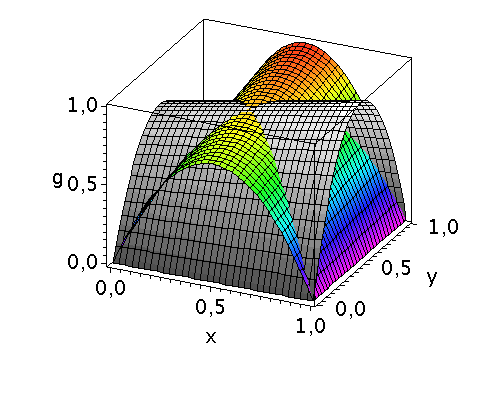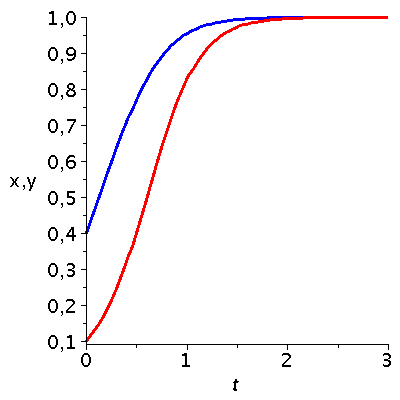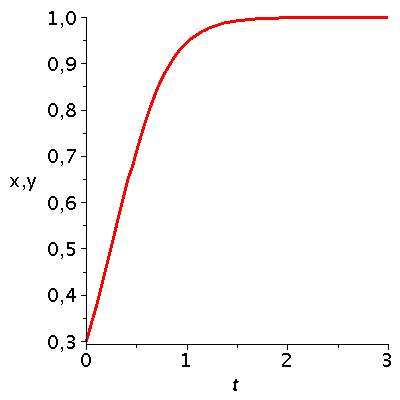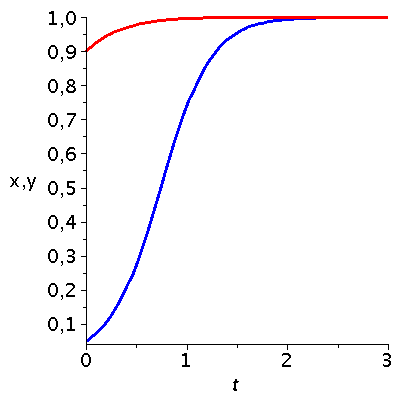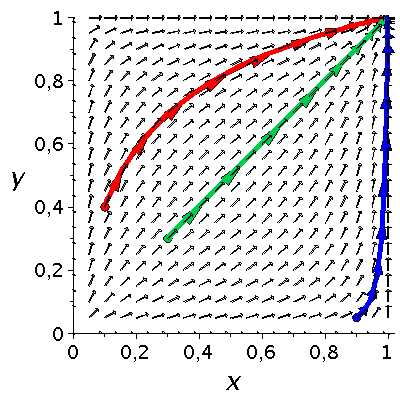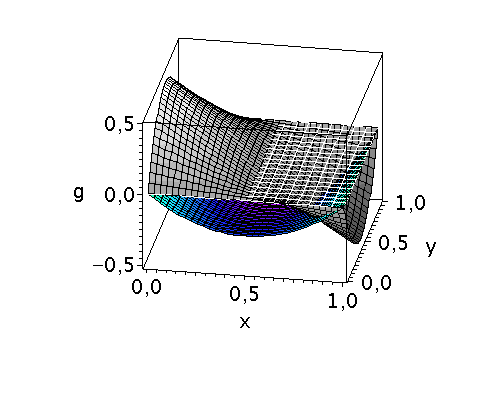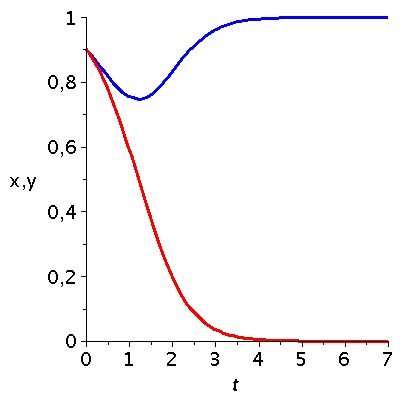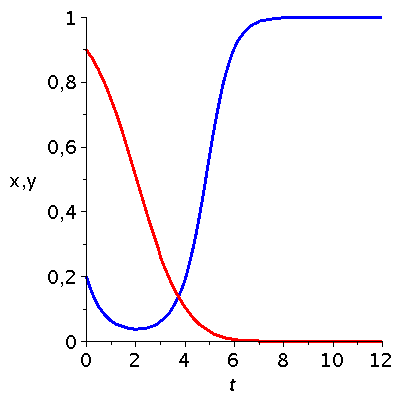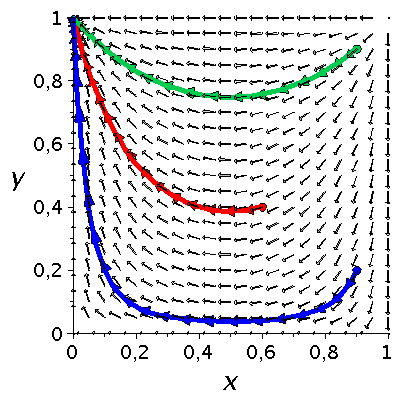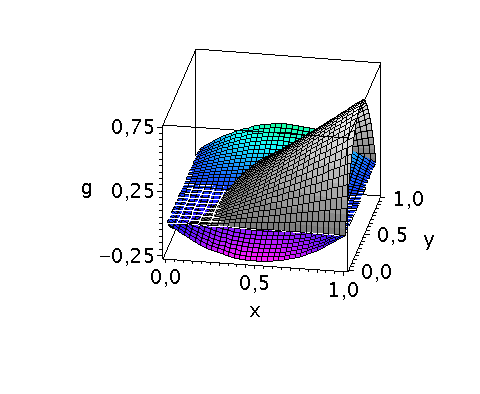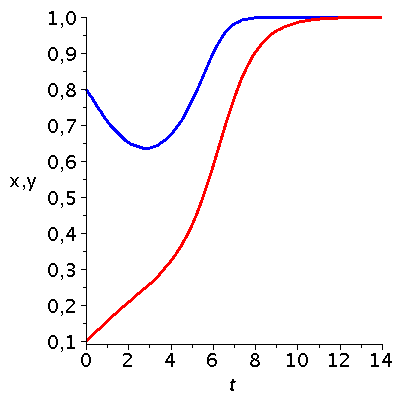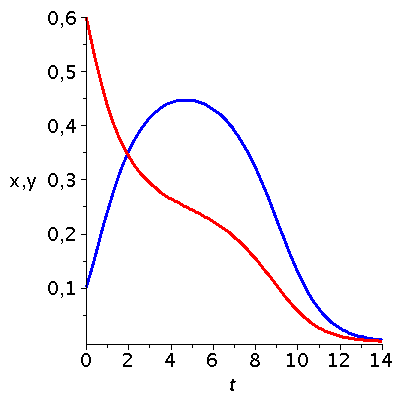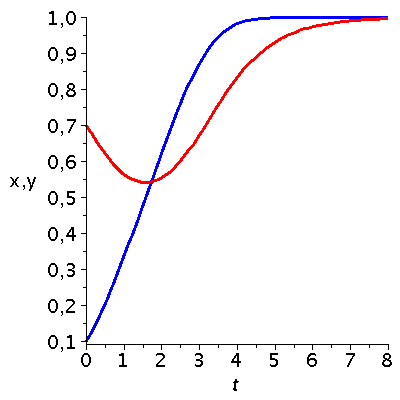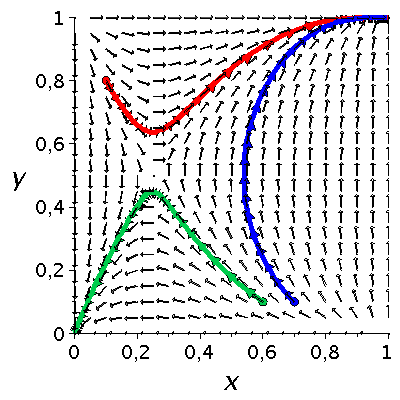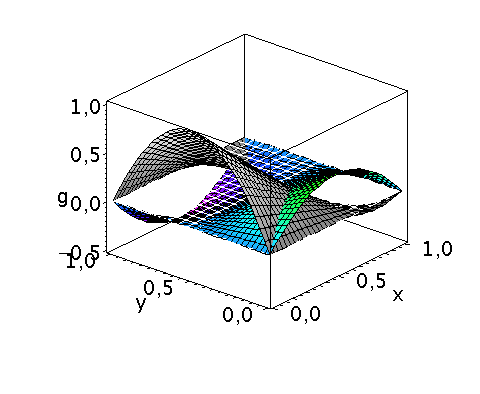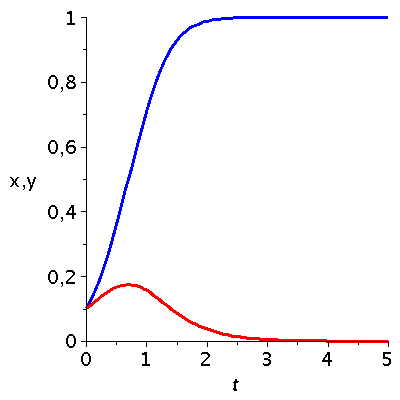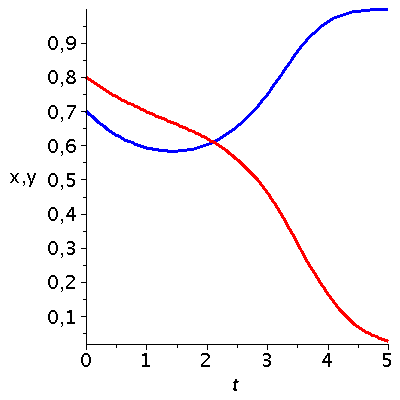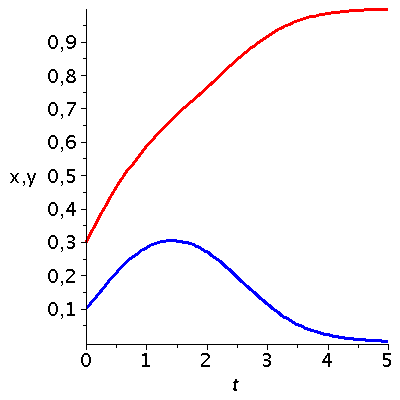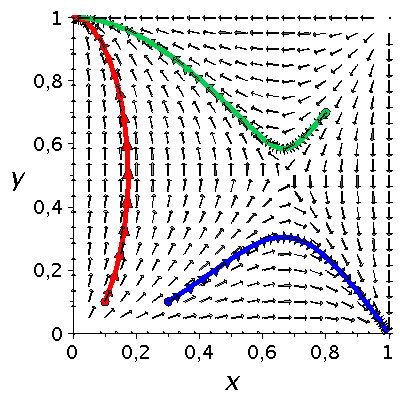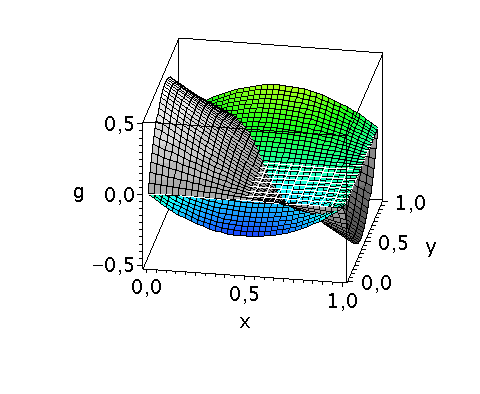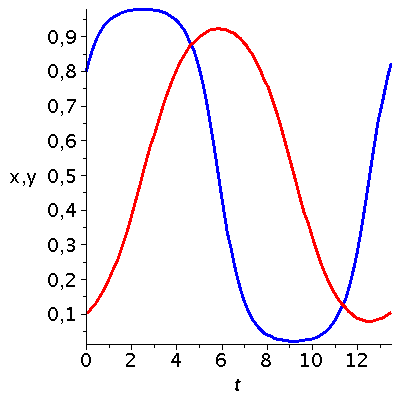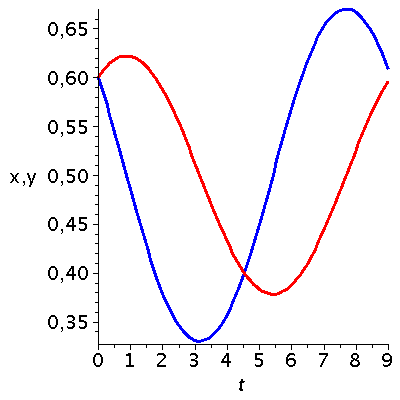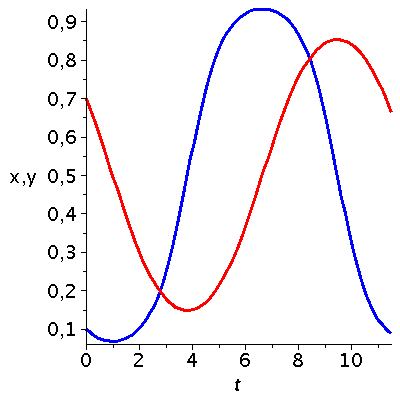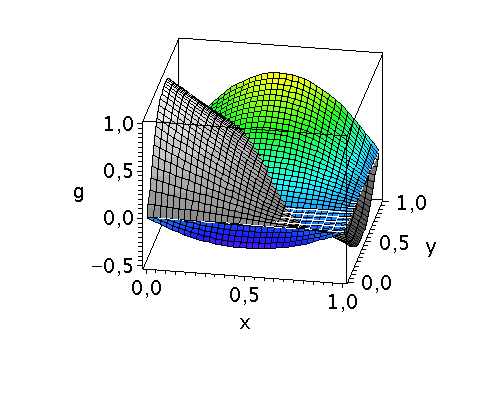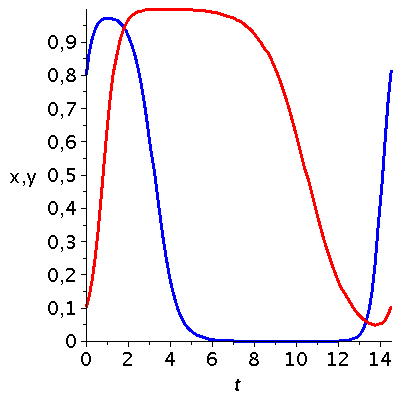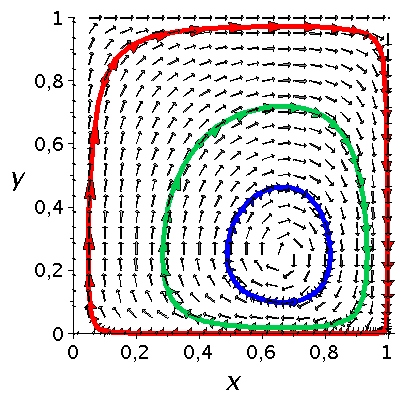Einführung
Dieses Maple-Worksheet befasst sich mit Bi-Matrix Spielen und berechnet deren Lösungen in einem evolutionären, zeitabhängigen Kontext.Ausgangspunkt ist eine allgemeine unsymmetrische Auszahlunsmatrix eines (2 Personen)-(2 Strategien) Spiels.
| > | restart:
with(plots): with(plottools): with(LinearAlgebra): with(ColorTools): with(StringTools): |
Das evolutionäre Spiel besitzt folgendes System von Differentialgleichungen (Strategienanzahl 2):
| > | Num_Strat:=2:
for i from 1 by 1 to Num_Strat do Eqx[i]:=Dx[i]=x[i]*(sum(D_A[i,l]*y[l],l=1..Num_Strat) - sum(sum(D_A[k,l]*x[k]*y[l],k=1..Num_Strat),l=1..Num_Strat)); Eqy[i]:=Dy[i]=y[i]*(sum(D_B[l,i]*x[l],l=1..Num_Strat) - sum(sum(D_B[l,k]*x[l]*y[k],k=1..Num_Strat),l=1..Num_Strat)); end do; |
| (1.1) |
Umschreiben des Systems:
| > | Eqxa[1]:=subs({x[1]=x(t),x[2]=1-x(t),Dx[1]=diff(x(t),t),y[1]=y(t),y[2]=1-y(t)},Eqx[1]);
Eqxa[2]:=subs({x[1]=x(t),x[2]=1-x(t),Dx[2]=diff(1-x(t),t),y[1]=y(t),y[2]=1-y(t)},Eqx[2]); Eqya[1]:=subs({x[1]=x(t),x[2]=1-x(t),Dy[1]=diff(y(t),t),y[1]=y(t),y[2]=1-y(t)},Eqy[1]); Eqya[2]:=subs({x[1]=x(t),x[2]=1-x(t),Dy[2]=diff(1-y(t),t),y[1]=y(t),y[2]=1-y(t)},Eqy[2]); |
| (1.2) |
Definition der Auszahlunsmatrix für Spieler A und B:
| > | D_A:=Matrix(2,2,[D_A11,D_A12,D_A21,D_A22]); |
| (1.3) |
Definition der Auszahlunsmatrix für Spieler B:
| > | D_B:=Matrix(2,2,[D_B11,D_B12,D_B21,D_B22]); |
| (1.4) |
Unter Verwendung der gemischten Strategien (x,y) lässt sich eine gemischte Auszahlungsfunktion der Spieler wie folgt definieren:
| > | Auszahlungsfunktion_A:=(x,y)->D_A[1,1]*x*y+D_A[1,2]*x*(1-y)+D_A[2,1]*(1-x)*y+D_A[2,2]*(1-x)*(1-y);
Auszahlungsfunktion_B:=(x,y)->D_B[1,1]*x*y+D_B[1,2]*x*(1-y)+D_B[2,1]*(1-x)*y+D_B[2,2]*(1-x)*(1-y); |
| (1.5) |
